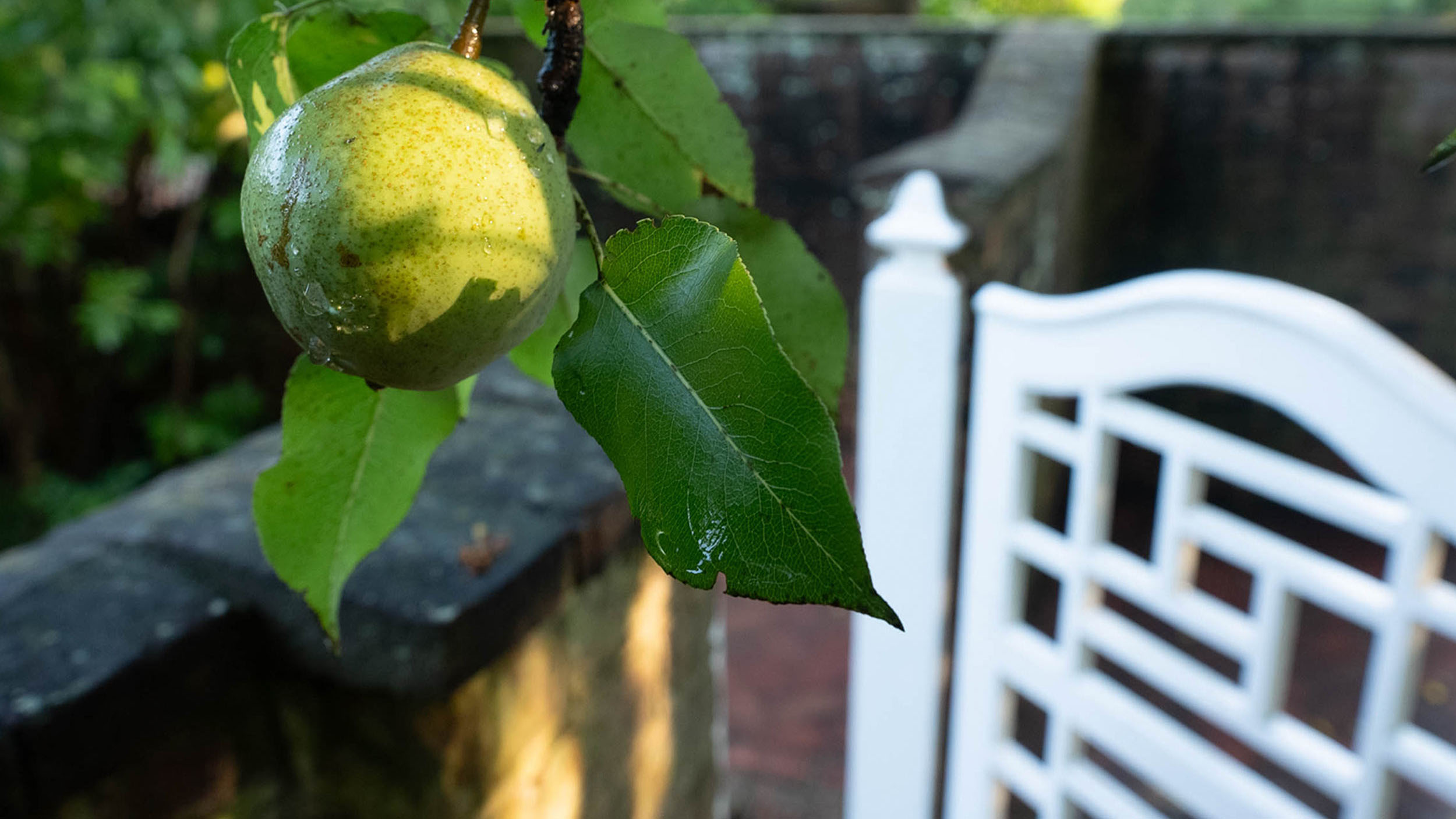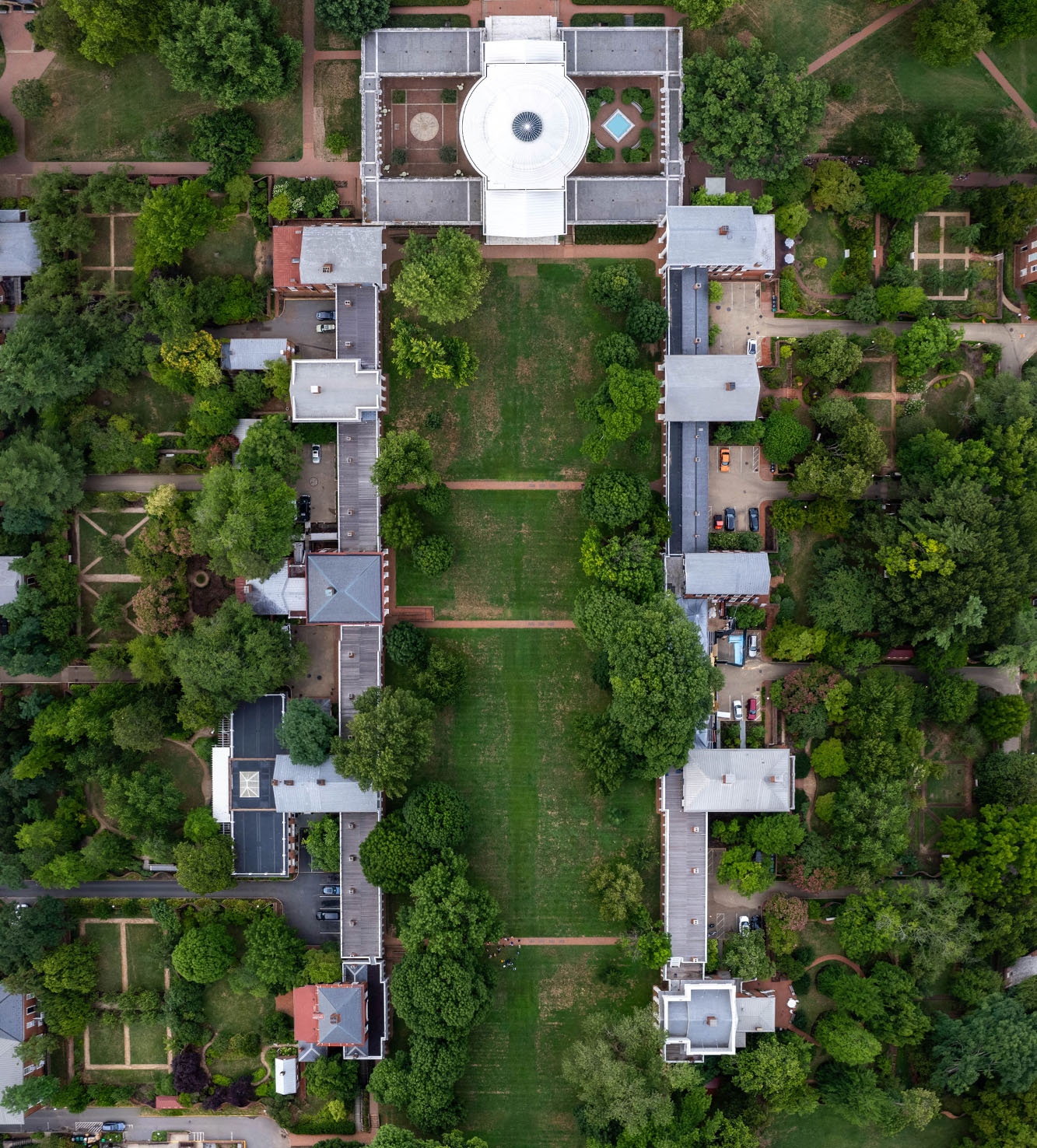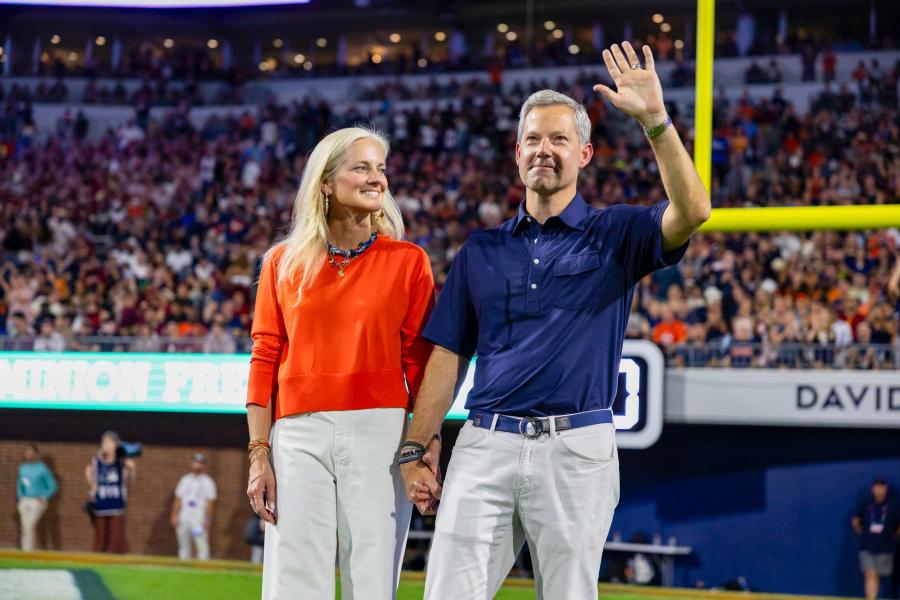Roland Vonder Muhll, UVA Horticulturalist
The majority of the gardens bordering the Lawn have edible plants in them, whether it’s kitchen herbs or fruit trees and some berry bushes. There’s also a couple grapevines right here that occasionally produce a few grapes.
[Music]
With any type of fruit, if it’s ripe, it’ll roll off into your hand pretty easily. That’s a little sweetness to it.
When school starts in late August, that’s an ideal time for picking apples, pears, figs. The peaches and plums will probably be gone, but if you come back early, you might find them. There’s something to find in almost every garden.
[Music]
When the University was founded, people didn’t go to a dining hall that had food brought into it by trucks, there were actually kitchen gardens behind the residences.
There were enslaved laborers who were working in the gardens, and some of the old structures right next to the gardens are structures that enslaved laborers lived in.
This current planting of fruit trees and berry bushes came as a result of the Garden Club of Virginia getting involved in restoring the gardens in the 1960s.
It’s special being in a nice, quiet enclosed area with the beauty of University Grounds. It’s like a little quiet refuge amid the larger busyness of the University.
Tucked away behind the pavilions of the Academical Village are fruits and herbs soon ripe for the taking and free to those who grace the gardens’ gates, tended to by Roland Vonder Muhll, horticulturalist for UVA Facilities Management. (Video by University Communications)






